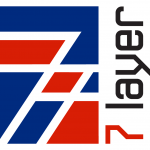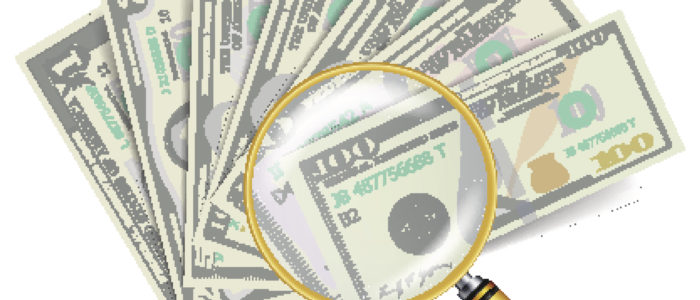White Paper: What can be gained with Serial Number Reading?
Dr. A. Leszczyszyn1, * and Mrs R. Grindley1, **
17 Layer Solutions Limited, Cheltenham, GL50 3DT, United Kingdom
*antin.leszczyszyn@7layer.net
**rebecca.grindley@7layer.net
ABSTRACT
This paper will discuss the benefit of serial number reading and its ability for enhancing the understanding of banknotes’ lifecycles, stock levels, demand and quality.
Keywords: NoteChain®, Note Serial Number, Cash lifecycle, Banknote Circulation
1 Introduction
A critical role of Central Banks (CB) and their currency issuers is forward planning of the life of banknotes. Their accuracy relies on the full comprehension of their banknote lifecycle. Without this clear understanding and accurate predictions of banknote life, there is a danger of overproducing, storing excess banknotes or, in the worst case, not meeting the public’s demand for cash.
The traditional approach to understanding banknote lifecycle, to aid planning, is not by directly observing the life of a banknote; it is common practice to estimate. This process can be complicated, inaccurate and resource intensive. Often a simple formula is used to estimate the mean or median life of banknotes. These measures tend to be particularly volatile over time as they cannot take into account shocks to currency demand, changes to currency issuer policies that affect distribution arrangements or the quality of circulating banknotes.
2 Traditional Approach
2.1 Data Collection
CB and Commercial Cash Handlers (CCH) distribute, sort and process billions of banknotes every year using high-speed sorting machines (HSS). Using these HSS machines, they check for banknote quality and authenticity. CB set quality standards for the CCH to follow when determining whether a note is in an acceptable condition to be redistributed. Banknotes with defects, like holes and tears, or those that are dirty or worn are removed from circulation: these are sent back to the CB for destruction.
2.2 Data Processing – Non-serial number processing
Data obtained from the HSS machines can be used in its entirety, in a sampled form or not used at all. When it is used in its entirety it is used for volume analysis. Often the information gathered can be mis-representative and cannot account for shocks to currency demand. Using the data in sample form can introduce an amount of sampling bias and may not produce reliable data. Sampled data also often has no bearing on the entire set. If not used at all there are many opportunities or insights that will be missed.
CB that use this data, in its entirety or in a sampled form, are often looking at the very short term behaviour e.g. shift processing speeds, immediate issues in the cash flow. They may have teams of statisticians analysing the data to estimate demand, destruction volumes and circulation.
There are many shortfalls to using this approach:
- Volume data is anonymous
- Sampled data may miss large or small areas of pertinent data – the full picture is not disclosed
- Machine faults are not easily detected
- Note fault patterns are difficult to determine
- It does not take into account duplicated data
- It cannot see the ageing profile of an individual note – approximations of the number of times a note is sorted are calculated based on volume
- Currency shocks cannot be detected – for example, changes in public use or demand
- Everything is observed as a volume change – it can either increase or decrease, it is hard to capture the reasons behind any change
3 Serial Number Approach
3.1 Data Collection
Through recent advancements in HSS machines, serial number reading is now possible. The HSS machines can currently process up to 2000 notes per minute, while recording the serial number and fitness information of each note that is sorted.
3.2 Data Processing – Serial number processing
Including serial numbers with the HSS machine data opens up a wider selection of possibilities. Every banknote’s life can now be independently observed by reading its unique serial number. From its conception at printing, its birth when first issued, when it ages through its life and to its death when it is returned for final destruction.
Serial number data now creates the links between the different processes in the note lifecycle. Changes in the behaviour, related to a note’s initial state, can be observed and understood.
Some advantages to using serial number data are:
- Data can still be viewed at volume but with a much improved accuracy
- Data can still be sampled but including serial number data increases the options for sample selection
- Notes in circulation can be understood from different viewpoints – currency, printer, circulation
- The age and relationships between events through a note’s life can be viewed and understood
- Duplicates can be identified and removed producing more meaningful analysis of the data set
- Faulty areas in processing can be identified and understood as faults
- Behaviour of data can be understood as a currency shock and anticipated in the future
4 Benefits and Opportunities
The data advantages listed above translate into benefits for CB wishing to understand and better plan, their note lifecycle. Some of the many benefits to CB of collecting serial number data along with fitness level information are:
- Being able to obtain a picture of a note as it ages. Where a CB has access to data on note ageing they have a more accurate idea of the length of time notes are in circulation (active and inactive) and how long notes are kept in reserve before being issued
- Linking a note through the various note lifecycle stages – printing, issuing, sorting and destruction;
- gaining insights into how and where notes are used
- understanding the ages of notes at different stages of the lifecycle
- knowing the percentage of notes that are present at each stage of the lifecycle
- determining the point at which a note starts to degrade
- Linking a note that is sorted to a specific period of time; the ability to trace a note back to when it was printed/issued in order to identify any faults in the process
- Better analysis of the degradation patterns of bank notes through tracing notes back to their printing contracts
- The ability to link notes to the costs associated with their printing, issuing and sorting
These benefits can not only provide these insights but improve the data available for CB statisticians. Not solely reliant upon estimation techniques, models can now be created and simulations and investigations run providing a better understanding of changes, known and unknown.
5 Conclusion
The introduction of serial number reading and its data into cash flow analysis has a large number of benefits. Currently the type of questions a CB may ask of its data are limited and along the lines of:
- How many notes were processed at this quality last week?
- How does this week’s trend compare with last week’s trend?
The addition of serial numbers to the CB data set opens up new avenues of investigation, knowledge and prediction.
With serial number data questions that CB would previously have not been aware of or would have found difficult to answer become much easier. Questions like:
- How much life is left in a banknote?
- Is there enough reserve stock?
- Do any of the CB monetary policies need adjusting?
- What is the current condition of notes in circulation?
- Do more notes need ordering?
- Does the substrate need changing?
- Does the CB definition of fit note need reconsidering?
The process of planning the cash cycle in CB/issuers can only be enhanced with the introduction of serial number data analysis.
References
1. Rush, A. (2015), The Life of Australian Banknotes, Reserve Bank of Australia, Research Discussion Paper, 10.
2. Deinhammer, H. & Ladi, A. (2017), Modelling euro banknote quality in circulation Feedback, European Central Bank, Occasional Paper Series, 204.



Comments are closed.